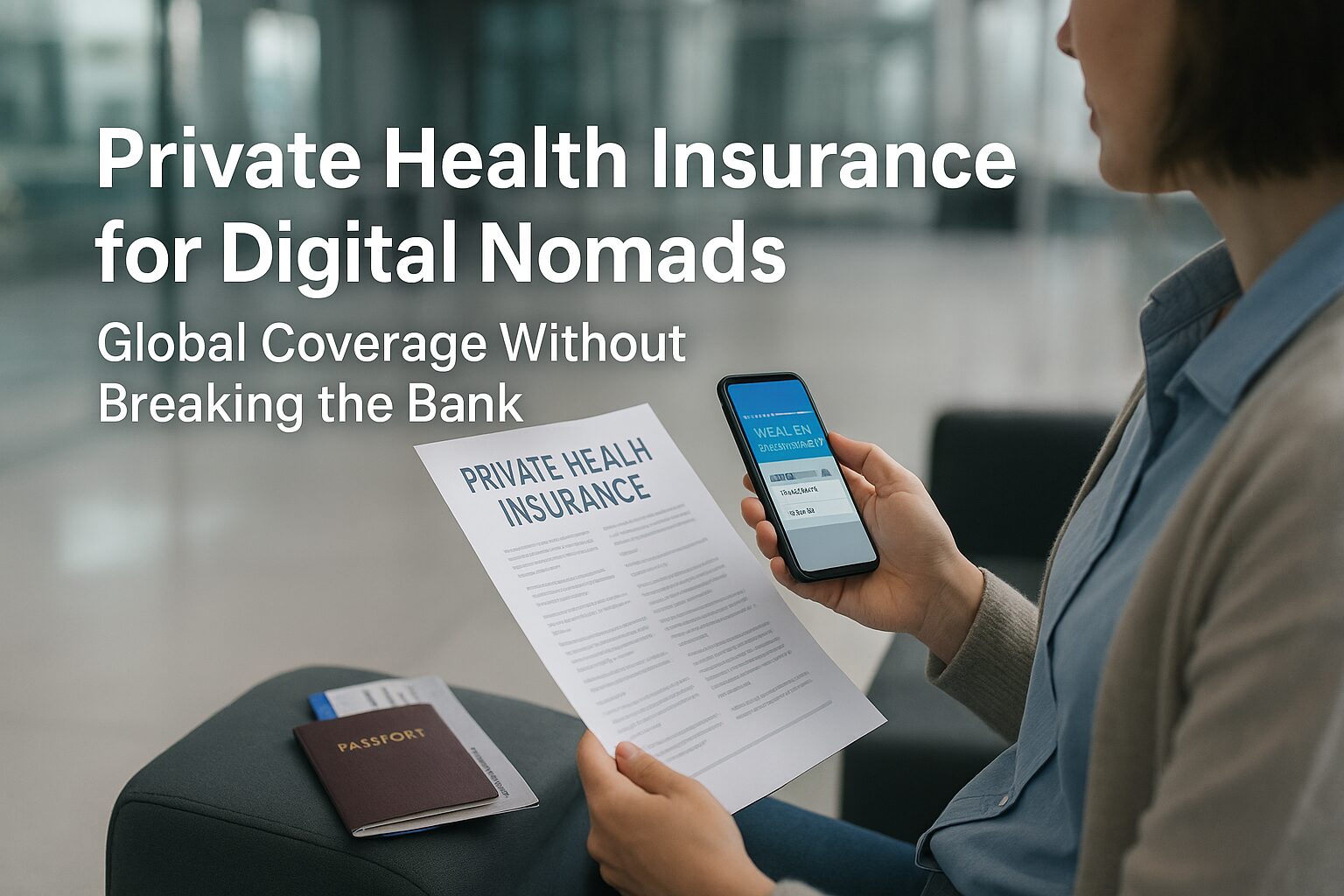This guide is for informational purposes only. It is not legal, tax, or financial advice. Always verify coverage terms and consult a qualified insurance advisor before purchasing.
Why Health Insurance Is Non-Negotiable for Digital Nomads
While traveling or living abroad, unexpected illness or injury can lead to catastrophic expenses—especially in countries with high medical costs like the US, Singapore, or Australia.
Risks without adequate coverage:
- Hospital bills in the US averaging $2,500/day
- Limited or no public healthcare access for foreigners
- Evacuation costs exceeding $50,000 in emergencies
- Loss of income during recovery
Many nomads assume a credit card’s travel insurance is enough—but most policies exclude long stays, pre-existing conditions, or non-emergency care.
The 4-Step Insurance Selection Framework
- Assess Coverage Needs
- Duration abroad, number of countries, frequency of travel
- Pre-existing conditions, high-risk activities (e.g., diving, skiing)
- Need for maternity, dental, or mental health coverage
- Compare Plan Types
- Travel Medical Insurance: Short-term, emergency-focused
- International Private Medical Insurance (IPMI): Long-term, comprehensive coverage
- Hybrid Plans: Combine travel benefits with ongoing healthcare access
- Evaluate Insurer Reputation
- Financial stability ratings (AM Best, Standard & Poor’s)
- Claims processing time and approval rates
- Provider network size and direct billing availability
- Check Compliance Requirements
- Some visas (e.g., German Freelance Visa) require proof of specific coverage levels.
- Countries like the UAE mandate locally compliant insurance.
Coverage Features That Matter Most
Emergency Medical & Hospitalization
- Minimum $500,000 limit; $1M+ preferred for high-cost countries.
- ICU, surgery, medications included.
Evacuation & Repatriation
- Covers transport to nearest suitable facility or home country.
- Includes medical escort if needed.
Outpatient Care
- Doctor visits, diagnostics, prescriptions.
- Some plans offer telemedicine—critical for remote areas.
Pre-existing Conditions
- Look for partial coverage after a waiting period.
- Avoid plans that permanently exclude common conditions.
Maternity & Dental (optional)
- Often require 10–12 months waiting period.
- Useful for long-term settlement.
Cost Benchmarks (2025 Data)
| Region of Residence | 30-Year-Old, $1M Cover, $500 Deductible |
|---|---|
| Southeast Asia | $55–$110/month |
| Europe | $75–$150/month |
| North America | $120–$250/month |
Factors affecting price: age, coverage scope, deductible, region risk rating.
Top Providers for Digital Nomads (No Affiliation)
- Cigna Global: Modular plans, large provider network.
- Allianz Care: Strong in Europe, flexible benefits.
- SafetyWing: Nomad-focused, monthly subscription model.
- IMG Global: Competitive rates, multiple tiers.
- GeoBlue Xplorer: Excellent US coverage.
90-Day Implementation Plan
0–30 Days: Research & Shortlist
- Define coverage priorities and budget.
- Request quotes from 3–5 providers.
- Verify exclusions and claim processes.
31–60 Days: Trial & Transition
- Choose plan with cancelable trial or monthly terms.
- Test provider network (schedule a routine visit).
- Upload policy documents to cloud storage.
61–90 Days: Optimize & Document
- Add optional riders (dental, maternity) if needed.
- Set calendar reminders for renewal.
- Keep claim receipts and medical records digitized.
Risk Management & Claims Tips
- Always get pre-authorization for non-emergency treatments.
- Keep local currency receipts and translations for claims.
- Use in-network providers to minimize out-of-pocket costs.
- Maintain backups of policy details in multiple locations.
Common Mistakes to Avoid
- Choosing based on price alone – inadequate limits can ruin you financially.
- Ignoring exclusions – adventure sports, pandemics, and mental health may be excluded.
- Not updating coverage when moving regions – premiums and benefits vary.
- Failing to renew on time – lapse in coverage may trigger waiting periods again.
Case Studies
Case 1: Southeast Asia Remote Worker
- Age 32, based in Bali, travels regionally.
- Switched from travel-only policy to IPMI after denied outpatient claim.
- Net saving: $1,200/year in uncovered expenses.
Case 2: European Freelancer
- Age 40, living in Portugal, traveling 90 days/year.
- Needed Schengen visa compliance + global cover.
- Chose Allianz Care with EU focus.
Case 3: US-Based Nomad
- Age 28, spends 6 months abroad/year.
- Selected GeoBlue for US + global coverage.
Expanded FAQ
Q: Is travel insurance enough for long-term nomads?
A: Usually not—it often excludes non-emergency or chronic care.
Q: Can I buy after leaving my home country?
A: Many providers allow it, but some require initial purchase before departure.
Q: Are pre-existing conditions ever covered?
A: Yes, but often after a waiting period or with higher premiums.
Q: How do I lower premiums?
A: Increase deductible, choose regional cover, remove non-essential riders.
Q: What’s the claim turnaround time?
A: Ranges from 5 days to several weeks depending on provider and documentation.
Action Plan for This Week
- List top 3 health risks for your lifestyle.
- Request quotes from at least 3 insurers.
- Check exclusions for your primary activities.
- Prepare digital copies of all health records.
- Join online nomad communities for provider reviews.
